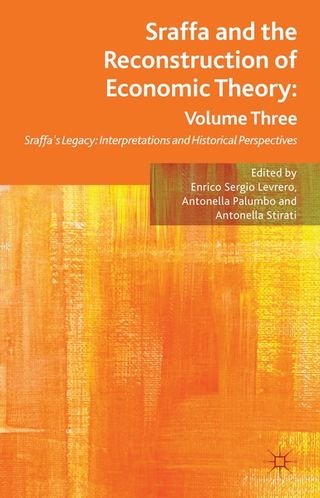?
Sraffa and the Reconstruction of Economic Theory
Written on the occasion of the 50th anniversary of the publication of Piero Sraffa's Production of Commodities by Means of Commodities, the papers selected and contained in this book accounts for the work completed around the two central aspects of his contribution to economic analysis, namely the criticism of the neoclassical (or 'marginalist') theory of value and distribution, and the reconstruction of economic theory along the lines of the Classical approach. Divided into three volumes, the book debates the most fruitful routes for advancements in this field and their implications for applied and policy analysis. The third volume collects papers concerning the interpretation of Sraffa's contribution, its relation with other streams in economic thinking, methodological debates and the history of economic thought or the evolution of his views both in general and on specific themes.
